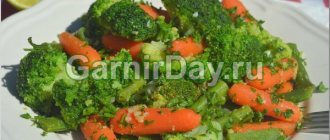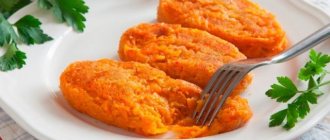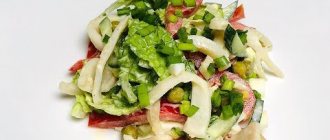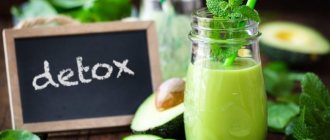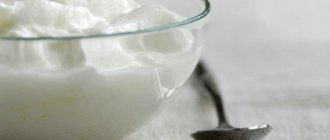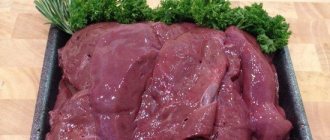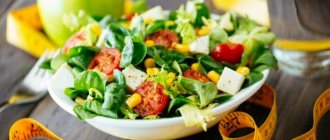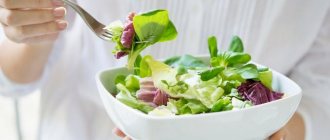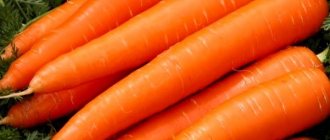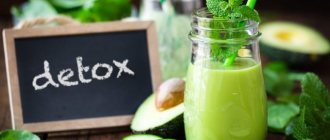Approximately 5% of children suffer from cow's milk allergy. This product contains many ingredients that can potentially cause an allergic reaction, but the most common reaction is to cow protein. During the normal process of digestion, food entering the stomach and then the intestines is broken down into enzymes, which are individually absorbed into the body. A child’s imperfect digestive system is sometimes unable to separate milk into enzymes. This situation creates an allergy to cow protein. It usually affects children aged from birth to one and a half years. And, as a rule, the symptoms of an allergy to cow protein go away on their own when the baby is about five years old. At this time, the functioning of the gastrointestinal tract improves, and it begins to produce the necessary substances to resist hostile elements. But sometimes milk intolerance lasts a lifetime. It should be noted that an allergy to cow protein can be a true allergy or a pseudo-allergy. True implies intolerance by the body of any amount of cow's milk protein. Pseudo-allergy is a condition when an allergic reaction occurs only after the child has “overeaten”, that is, a certain amount of milk enzymes has been digested normally, but the body cannot accept the excess.
Children with allergies to cow protein can be given fermented milk products - kefir, fermented baked milk, yogurt, cottage cheese. The enzymes contained in cow's milk break down into their components during the preparation of the fermented milk product. And the child’s body can try to digest these components. When offering your baby yogurt or cottage cheese, observe his reaction. If symptoms of an allergy to cow protein appear (rash, itching, nausea or vomiting), then the product should be excluded from the diet for now.
Menu for children with milk allergies
Creating a balanced and complete diet for a baby with milk intolerance is not so difficult, although it is a traditional component of most children's dishes. And, more importantly, a very valuable food product for the child. “Milk is ideal in terms of the ratio of calcium and phosphorus for building the musculoskeletal system,” says Natalya Fadeeva, nutritionist-endocrinologist, MD, author of the book “Is the child overweight?” “It contains more than 90 useful substances: 20 amino acids, 18 fatty acids, 13 vitamins, almost all enzymes found in nature, minerals and milk sugar.” To ensure that the body of a child with a milk allergy does not suffer from a deficiency of the necessary components, the menu will have to be compiled especially carefully.
Hypoallergenic products
Food is foreign to the body in terms of the structure of its DNA, but this does not cause reactions normally. Even with a sufficient amount of enzymes, some protein molecules do not undergo complete fermentation to amino acids, and can be absorbed into the blood unchanged, causing allergies. The diet for allergies is made up of such products. These are vegetables, grains and fruits that grow in the region where humans live, are not bright red in color, and do not contain many proteins and immune agents from the animals from which they were obtained.
If you have a food allergy, you need to remember that you should not eat the following foods :
- Coffee, cocoa, chocolate. The reaction to these products is accompanied by cross-allergy to legumes. They are usually triggered by caffeine and theobromine in these products.
- Semi-finished products, smoked meats. They contain preservatives and food additives that cause both true and pseudoallergic reactions. When smoking, many carcinogenic substances are formed.
- Mushrooms. Rich in protein and difficult to ferment, they contain chitin and glucans in the cell wall.
- Legumes (peas, beans, peanuts, lentils) are known as a rich source of plant proteins, which serve as allergens.
- Milk. In addition to the casein protein, milk contains antibodies to create passive immunity in the young animals from which it is obtained (cows, goats, etc.).
- Eggs. They contain the protein albumin and other nutrients necessary for the development of the bird embryo and can cause a reaction.
- Fish and seafood. The presence of protein M-antigen in them, resistant to temperature treatment, was established.
- Cross allergies (vegetables and fruits). If a patient suffers from a pollen allergy, then reactions occur to fruits and vegetables that have similar pollen structure or that belong to the same genus (poplar, willow, apples). When reacting to pollen, it is easier to know exactly which foods to eliminate.
- Meat. It contains a lot of protein, but usually due to denaturation during its preparation, the ability to sensitize is greatly reduced.
- Cereals, especially wheat. They contain gluten, albumin and gliadin.
Pseudoallergic reactions and some hypervitaminosis have manifestations similar to allergies. The main difference is the appearance of symptoms when foreign peptides first enter the body, and the dependence of the severity of the deterioration of the patient’s condition on the amount of the product eaten. Such reactions appear to fruits and vegetables that are bright red, sometimes orange (tomato, pomegranate, citrus fruits, strawberries).
What you can eat - food list
A hypoallergenic diet requires the exclusion of first-order allergens (exotic fruits and vegetables, strawberries, cocoa, mushrooms, peanuts, nuts, coffee, honey, seafood, eggs, fish and milk with its derivatives - powdered milk and cheeses), and moderate consumption of second-order allergens (cereals - wheat, rye, corn, buckwheat; legumes; potatoes; currants; cranberries; apricots; lingonberries; fatty meats with rich broths made from them; herbal infusions).
The following types of food are allowed:
- Lean meat;
- food proven to be partially fermented during cooking;
- products specific to the place of residence;
- white and green vegetables;
- offal;
- cereals
Grocery list
Hypoallergenic foods that you can eat:
- Cereals: semolina, rice, as well as oatmeal and pearl barley.
- Low-fat fermented milk products without additives, preferably homemade: cottage cheese (9%), kefir (1%), fermented baked milk.
- Meat: lean beef, turkey, pork.
- By-products (beef, pork): liver, tongue, kidneys.
- Cod and sea bass.
- Bread made from buckwheat, rice or corn.
- Oil: butter, sunflower, olive.
- Brussels sprouts, white cabbage, cauliflower.
- Rutabagas, squash, zucchini, turnips.
- Broccoli, green salad, spinach, greens.
- Green apples, pears, white currants and cherries, gooseberries.
- Compote of apples and pears (also dried), rosehip decoction, weakly brewed tea.
- Still mineral water.
Breakfast
The most popular dishes to start the day are all kinds of porridges: oatmeal, buckwheat, pearl barley, barley, rice, corn, wheat, millet, etc. For children, they are usually boiled in milk or water with milk - it helps the vegetable proteins of the grains to be absorbed. In our case, you will have to cook only with water (3 parts of water for 1 part of cereal). Instead of cow's milk, you can try using soy, oat or rice milk. “Choose whole grain porridges, they are healthier: they have a lot of fiber, they are digested more slowly and provide energy for a longer period, so you don’t feel hungry for a long time after them,” says Natalya Fadeeva. — Instead of whole grain oatmeal, you can use Hercules flakes, which are boiled for at least 10 minutes. Porridge cooked in water can be served with a small amount of yogurt, cottage cheese, a piece of cheese or any fermented milk product.” Do not replace whole grain cereals with refined products (muesli, cereal, instant cereals). The child quickly gets used to their sweet taste, and switching him to a less tasty, but much more healthy educational porridge is much more difficult than immediately accustoming him to proper food. Berries, finely chopped fruits, a small amount of honey or jam will help improve the taste of the dish.
Buckwheat krupenik
Ingredients: 150 g buckwheat, 175 g cottage cheese (up to 5%), 1 egg, 30 g 4% fat yogurt, 1/2 tsp. salt, 10 g butter.
Instructions. Cook crumbly buckwheat porridge, add cottage cheese, pureed with egg and salt. Mix everything, place on a greased baking dish and bake in the oven or microwave. Serve with yogurt. If the dish is intended for lunch, it is good to add a vegetable salad or soup with vegetables to it.
Pancakes with nuts
Ingredients: 1 tbsp. soy or rice milk, 2 quail eggs, 1 tbsp. olive oil, 1.5 tbsp. corn flour, sugar, salt, vanilla to taste. For filling: 5 walnuts, 1 tsp. jam.
Instructions. In a blender, beat eggs, salt, sugar, milk, butter and vanilla. Then add flour, stirring constantly. Prepare the filling by chopping the nuts in a blender and mixing them with the jam. Fry the pancakes in a “dry frying pan” without oil. They should be voluminous. Make a cut in the pancakes and fill with filling.
Berry sauce
Ingredients : 290 g of any berries (strawberries, blueberries, blueberries, lingonberries, etc.), 1 tbsp. powdered sugar, 1 tbsp. lemon or orange juice.
Instructions. Mix all ingredients and grind with a blender.
Serve with cereals and fruit salads.
Hypoallergenic diet for children by age: menu
Up to 1 year
In infancy, the body's immune system is just beginning to adapt to new conditions. Therefore, a hypoallergenic diet for children 1 year of age and earlier must be particularly precise and precise; new products will have to be introduced with great care so as not to provoke an unwanted failure. There are a number of rules that must be followed:
- All manipulations with baby food are carried out exclusively under the supervision of a pediatrician.
- Red fruits and vegetables are completely excluded.
- Complementary foods are introduced gradually, according to age standards.
- It is not advisable to give fish and chicken to the little ones; it is better to stick to rabbit, veal, and turkey. It is permissible to introduce the heart, liver, and tongue little by little.
- All sugar products are prohibited.
- Children with allergies should not be given eggs in any form until they are one year old.
- Cooking should only be done by boiling and/or steaming; you cannot fry or bake.
- Whole cow's milk is not included in the diet; only fermented milk products can be gradually added.
- All cereals containing gluten are excluded.
2 years
By this age, complementary foods are almost completely formed, so you can concentrate on therapeutic nutrition.
- Gradually, you can try to include new vegetables and fruits, monitoring the body's reaction.
- The menu includes not only boiled, but also baked products.
- From the second year onwards, you can try cooking the soup in meat broth.
- Legumes are introduced.
With great caution, children with allergies at the age of two can be given sauces, spices, stewed and fried foods. At this age, the baby is being transferred to an adult table, so you should be extremely careful not to cause a negative reaction.
3 years
As the child grows, his body adapts more and more and more easily tolerates the presence of allergens on the menu. However, you shouldn't relax too much.
- Porridge can be prepared with baked apples and other fruits, or add pumpkin.
- In some cases, starting from the age of three, you can try giving your kids white varieties of fish.
- Soups can be prepared creamy or pureed, they can contain a lot of vegetables and are cooked in meat broth.
- It is advisable to introduce casseroles into your diet, and not just cottage cheese ones.
- You can introduce minced meat products, but it is advisable to cook it yourself.
- It’s good to start preparing vegetable purees, and it can be made not only from potatoes. It is good to use zucchini, cauliflower and white cabbage; you can add broccoli, pumpkin, and carrots.
- It is permissible to add baked goods without sugar and with a minimum amount of fat to the menu.
4-5 years
Preschoolers and primary school students should also adhere to the diet, although it will be difficult for parents to control the baby. After all, he may be treated to prohibited foods, to which a reaction will follow. It is very important to explain to your child how important it is to follow a proper diet. At this time, you can gradually add the following products:
- Dried fruits.
- Lean parts of pork.
- Vegetables to which there is no immune response.
- Baking and baking from permitted products.
- Various homemade desserts, such as puddings, jellies, cheesecakes and more.
6-7, 8-10 and 11-12 years old
A hypoallergenic diet for children 7 years of age and older in practice differs from an adult diet only in the amount of food. All products must be administered carefully, carefully monitoring the body’s reaction. You can slowly add foods that were previously always prohibited, such as red vegetables, fruits and berries. If a backlash occurs, the product is excluded.
Dinner and supper
Lunch is the second main meal, with which the child receives the necessary energy from noon to evening. The basis of a proper, healthy lunch is soup and a protein dish (fish, poultry or meat). “The soup should be low-fat,” says Natalya Fadeeva. — It is best if it is a vegetarian vegetable soup without meat broth, a low-fat vegetable puree soup, a lean fish soup, a soup with meat in a second broth. For the second course you can serve a cutlet, meatballs, casserole, or soufflé. Lean fish (cod, icefish, haddock, pike perch, hake, blue whiting, pollock), lean poultry without skin (chicken, turkey, guinea fowl), and lean meat (veal, beef, rabbit) are best suited for them.” A necessary addition to a protein dish for lunch is a starchy side dish, such as boiled potatoes, brown rice, buckwheat, durum wheat pasta, and whole grain bread. You can make casseroles from vegetables. The ideal side dish is a combination of a starch-containing component with thermally processed vegetables or vegetable salad.
In the evening, the body prepares for sleep. “Therefore, you should have dinner with small, light, non-stimulating food,” says Natalya Fadeeva. - For dinner there must be a protein dish - the same low-fat fish or poultry. Cottage cheese (up to 5%) and eggs are suitable. It is better not to give your child red meat in the evening - it excites and takes a long time to digest. As a side dish for dinner, it is best to serve thermally processed vegetables or vegetable salads; you can make casseroles from vegetable and protein components. It’s better to avoid starchy side dishes.”
Fruit and vegetable salad
Ingredients: 100 g fresh pumpkin, 1 medium carrot, 1 green apple, 1 tsp. lemon juice, 3 orange slices.
Instructions. Grate the vegetables and apple on a coarse grater and mix. Add lemon juice and chopped orange slices.
Lentil soup
Ingredients: 1 tbsp. red lentils, 1.5–2 liters of water, 1 medium onion, 1 medium carrot, 1 stalk of celery (or 50 g of root), black peppercorns to taste (5–6 peas), 3–4 bay leaves, 1 parsley root , spices to taste, herbs (dill, parsley).
Instructions. Pre-soak the lentils for several hours (overnight is possible), then rinse thoroughly, cover with cold water and cook over moderate heat. Bring to a boil and add roots. After five to ten minutes, add chopped onion and coarsely grated carrots to the soup, cook over low heat for about another 10 minutes. Add bay leaf, pepper and remaining spices. Once the lentils are completely cooked, turn off the heat and let simmer for 5-8 minutes. Add salt to taste and serve with finely chopped herbs.
Chicken or turkey breast medallions
Ingredients: 400 g chicken (turkey) fillet, 1 tbsp. lemon juice, 0.5 tsp. curry and cumin, 1 tbsp. olive oil, salt to taste.
Instructions . Cut the fillet across the grain into pieces 1-1.5 cm thick. Place in a bowl and season with lemon juice, oil, sauce, curry, cumin and salt. Mix everything thoroughly and leave to marinate for 15 minutes. Place the pieces in a cold, oil-free frying pan with a thick bottom and cook them covered for 20 - 25 minutes. Serve with vegetables and brown rice.
Fish cutlets
Ingredients: 400 g lean fish fillet (cod, pike perch, haddock), 1 medium onion, 1 egg, 1 medium potato, spices, herbs to taste.
Instructions. Pass the fish fillet through a meat grinder twice. Also grind onions, potatoes, herbs in a meat grinder (or blender), add egg, spices, and salt. Mix everything thoroughly, form cutlets and cook them in a “dry frying pan” lightly greased with vegetable oil (you can cook in a double boiler, slow cooker or bake). Serve garnished with chopped herbs.
Baked apples with lingonberries
Ingredients: 5-6 apples (Antonovka is best), 1/2 tsp. cinnamon, 100 g lingonberries, 100–150 g water, 1–2 tbsp. Sahara
Instructions. Cut the top of the apples into a cone with an indentation. Place lingonberries (can be chopped) inside the fruit, add cinnamon and sugar. Place in a heatproof pan, add water and cook over low heat for 15 minutes. If you bake apples in the microwave or oven, you don’t need to add water.
Sample menu for a week with a hypoallergenic diet
When compiling a diet, you need to pay attention to the person’s age, the type and intensity of the allergic reaction, and culinary preferences. A weekly menu might look like this.
Monday
The diet consists of 3 main meals:
- breakfast: oatmeal with allowed fruits;
- lunch: vegetable soup with beef broth, boiled chicken fillet;
- dinner: buckwheat porridge, steamed lean meat cutlets with stewed zucchini.
Oatmeal is one of the healthiest cereals for the body.
Tuesday
The following menu is suitable for Tuesday:
- in the morning: toast with mild, not too salty cheese;
- lunch: chicken soup, baked apples for dessert;
- in the evening: stewed lean meat with boiled potatoes in their jackets.
Wednesday
Example of a hypoallergenic diet:
- breakfast: buckwheat porridge, cottage cheese with sour cream;
- for lunch: cabbage soup with cauliflower, boiled veal;
- for the evening: boiled rice, steamed turkey fillet, fresh cucumber salad with vegetable oil.
Buckwheat is a valuable cereal product that contains protein.
Thursday
On Thursday the menu will consist of the following products:
- in the morning: pasta with cottage cheese or low-fat hard cheese;
- main meal: pickle soup, steamed fish (if you are not allergic to seafood);
- in the evening: stewed vegetables (potatoes, broccoli, carrots, zucchini), a glass of fermented baked milk.
Friday
Menu for Friday:
- breakfast: cottage cheese casserole;
- for lunch: boiled rabbit meat with stewed or grilled vegetables;
- evening: sweet rice with applesauce, low-fat kefir.
For breakfast you can eat cottage cheese casserole.
Saturday
A table on Saturday might look like this:
- in the morning: cottage cheese with allowed dried fruits;
- main meal: lean borscht, steamed cutlets from dietary meat;
- dinner: vegetable stew to taste, oatmeal.
Sunday
Sunday menu:
- breakfast: bread sandwiches with boiled chicken;
- main meal: soup with meatballs, fruit puree;
- for the evening: fresh vegetable salad dressed with vegetable oil, buckwheat porridge, a glass of kefir.
Sandwiches made from bread with boiled chicken will be a good hearty breakfast.
